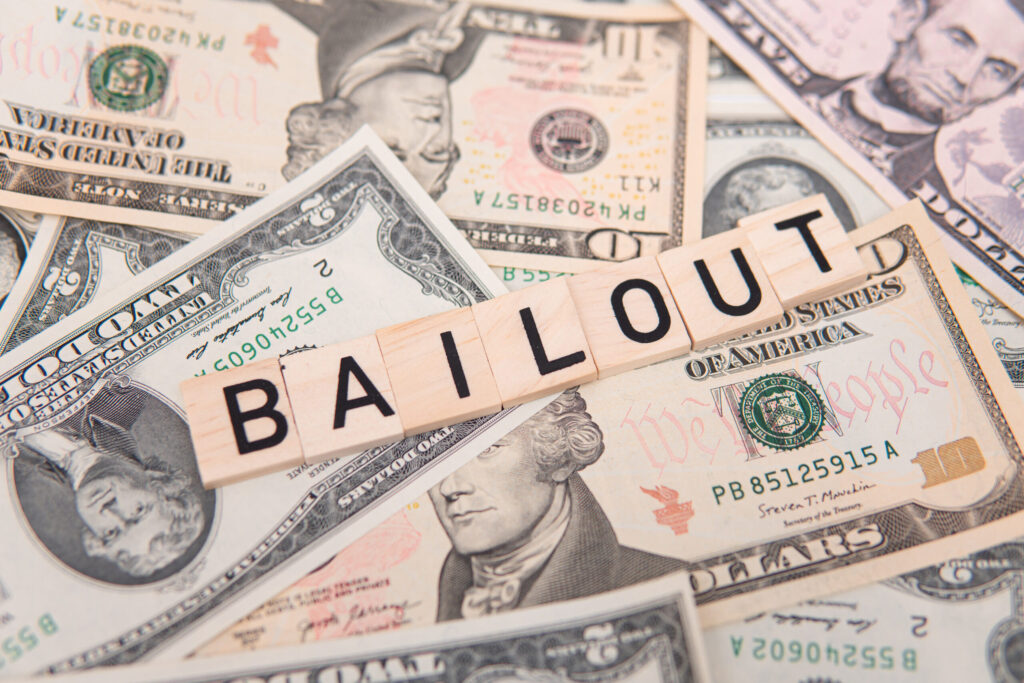Dissecting the First Republic Bank Bailout

Grasping the intricacies of the First Republic Bank bailout, in which the bank secured a $30 billion lifeline from leading American banks, is essential for both investors and customers.
This guide delves into the bailout, exploring the factors that triggered the crisis, the key players involved, and the results. Continue reading to gain valuable insights into the bailout and its implications.
Background on First Republic Bank’s Crisis
First Republic Bank encountered a crisis of confidence when prominent credit rating agencies, Fitch Ratings, and S&P Global Ratings, downgraded its credit rating. This action stemmed from concerns that depositors might withdraw their funds, revealing potential weaknesses in the bank’s financial framework.
One of the primary factors contributing to the crisis was the bank’s substantial portion of uninsured deposits, which accounted for 68% of total deposits and exceeded the $250,000 FDIC limit.
Additionally, First Republic had an elevated liability-to-deposit ratio of 111%, signifying that the bank had lent more money than it held in customer deposits. This combination of factors made the bank a particularly precarious investment, intensifying the crisis and necessitating a bailout.
The Bailout Participants and Rationale
The bailout involved a consortium of America’s largest banks, including JPMorgan Chase and Bank of America.
These banks provided the much-needed $30 billion lifeline to First Republic Bank. The Treasury Department endorsed this show of support, emphasizing its importance in demonstrating the banking system’s resilience.
The primary reason behind the bailout was to restore confidence among First Republic Bank’s customers and investors. The infusion of funds aimed to ensure the bank’s ability to meet customer withdrawals and bolster confidence in the US banking system during a tumultuous period for lenders.
This collaborative effort by major banks signaled their confidence in First Republic Bank and underscored the critical role regional, midsize, and small banks play in maintaining a healthy financial system.
Bailout Process and Federal Reserve’s Intervention
The bailout process involved the participating banks depositing a combined $30 billion into First Republic Bank. This infusion of funds gave the struggling bank the necessary cash to address customer withdrawals and stabilize its operations.
Treasury Secretary Janet Yellen and JPMorgan CEO Jamie Dimon played pivotal roles in orchestrating the bailout. Yellen initiated the idea of major US banks joining forces to provide deposits to First Republic, while Dimon led the effort to organize the bank executives that eventually supported the deposit infusion.
Their collaboration was crucial to stabilizing the bank’s deposit base and signaling confidence in the US financial system.
The Federal Reserve created a loan system to prevent regional bank failures in response to the crisis. The facility allowed banks to give the Fed their Treasury bonds as collateral for one-year loans, receiving the value the banks paid for the Treasuries in return.
Despite this extraordinary intervention, it appeared insufficient in maintaining investor confidence, leading to the need for the private sector-led bailout of First Republic Bank.
The Bottom Line
The First Republic Bank bailout is a prime example of the interconnectedness and complexities within the banking industry.
As we’ve seen, the crisis at First Republic was resolved through the concerted efforts of major banks, the Treasury Department, and the Federal Reserve. Investors and customers need to understand such significant events and their implications to confidently make informed decisions and navigate the financial landscape.
If you are seeking expert guidance to understand the banking industry better or require assistance with financial matters, do not hesitate to connect with our team at Smith, Stohlman, James & Gardere, P.A.
We are committed to providing you with the knowledge and support you need to make informed financial decisions. Reach out to us to discover how we can help you achieve your financial goals.
